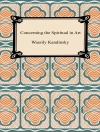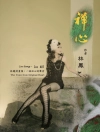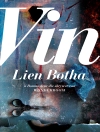Assesses the range and magnitude of Robert Gardner’s achievements as a filmmaker, photographer, writer, educator, and champion of independent cinema.
During his lifetime, Robert Gardner (1925–2014) was often pigeonholed as an ethnographic filmmaker, then criticized for failing to conform to the genre’s conventions-conventions he radically challenged. With the release of his groundbreaking film Dead Birds in 1963, Gardner established himself as one of the world’s most extraordinary independent filmmakers, working in a unique border area between ethnography, the essay film, and poetic/experimental cinema. Richly illustrated, Looking with Robert Gardner assesses the range and magnitude of Gardner’s achievements not only as a filmmaker but also as a still photographer, writer, educator, and champion of independent cinema. The contributors give critical attention to Gardner’s most ambitious films, such as Dead Birds (1963, New Guinea), Rivers of Sand (1975, Ethiopia), and Forest of Bliss (1986, India), as well as lesser-known films that equally exemplify his mode of seeking anthropological understanding through artistic means. They also attend to his films about artists, including his self-depiction in Still Journey On M (2011); to his roots in experimental film and his employment of experimental procedures; and to his support of independent filmmakers through the Harvard Film Study Center and the television series Screening Room, which provided an opportunity for numerous important film and video artists to present and discuss their work.
Зміст
Introduction Robert Gardner
Rebecca Meyers, William Rothman, and Charles Warren
Part I. Overviews and General Topics
1. Some Notes on Robert Gardner
Eliot Weinberger
2. In Flight with Robert Gardner
Tom Conley
3. Colors
Fanny Howe
4. Aesthetic Form and Ethnographic Discourse
Daniel Morgan
5. Robert Gardner and Jean Rouch: Regards Croisés
Maxime Scheinfeigel
6. Robert Gardner’s Reality
Charles Warren
7. To Give, To Take, and To Return
Gayatri Chatterjee
8. Ethno-Cine-Poet: Robert Gardner and Experimental Film
Kathryn Ramey
9. A Revolution in Favor of Television: WCVB-TV and Robert Gardner’s Screening Room
Brian L. Frye
10. On Shamanism and Other Encounters: A Conversation with Robert Gardner in Mexico
Carlos Y. Flores and Antonio Zirión
11. Returning with Robert Gardner to the Baliem Valley, 1988–89
Susan Meiselas
Part II. Looking at Individual Films
12. First Encounters: An Essay on Dead Birds and Robert Gardner
Charles Musser
13. Allegory and Gender Representation in Rivers of Sand
Mauro Bucci
14. Word against Flesh in Rivers of Sand
Irina Leimbacher
15. Look At Me! Deep Hearts and the Vertiginous Self
Murray Pomerance
16. Nomadic Metrosexuals: Framing Beauty, Editing Ritual, and Exhibiting Masculinity in Deep Hearts
Ricardo E. Zulueta
17. Film, Matter, and Spirit: Forest of Bliss
Richard Allen
18. The Same Thing from Different Angles: Resituating Forest of Bliss
Julia Yezbick
19. Hand Eye Coordination: Robert Gardner’s Artist Films
Richard Deming
20. Learning from Catalonia
Bruce Jenkins
21. Dead Birds Re-Encountered: A Journey of Return
William Rothman
Acknowledgments
Credits
Appendices
Robert Gardner Biographical Sketch
Robert Gardner Filmography
Publications by Robert Gardner
Books about Robert Gardner’s Work
Contributors
Index
Про автора
William Rothman is Professor of Cinematic Arts at the University of Miami. His many books include Tuitions and Intuitions: Essays at the Intersection of Film Criticism and Philosophy and Hitchcock: The Murderous Gaze, Second Edition, both also published by SUNY Press.












